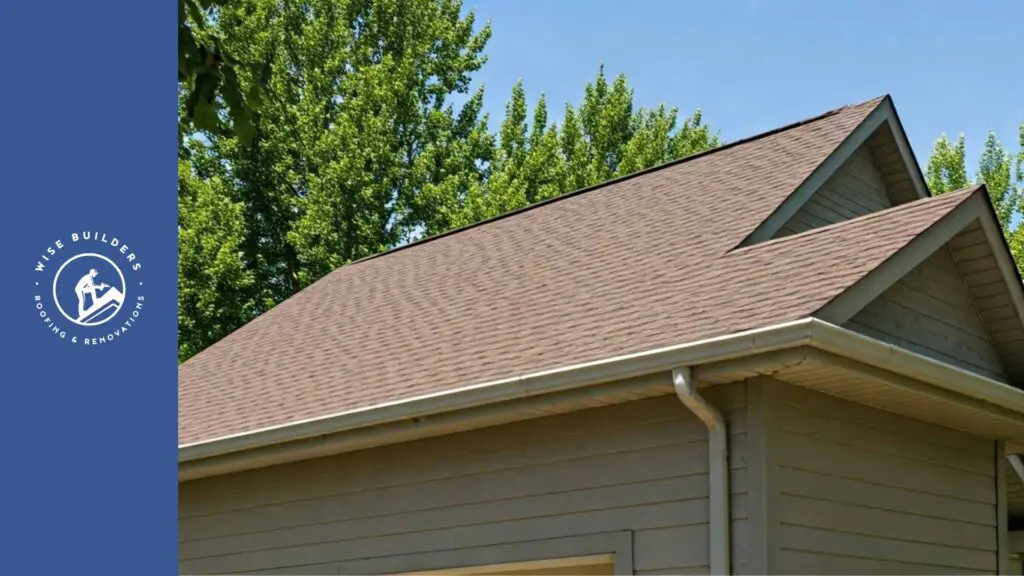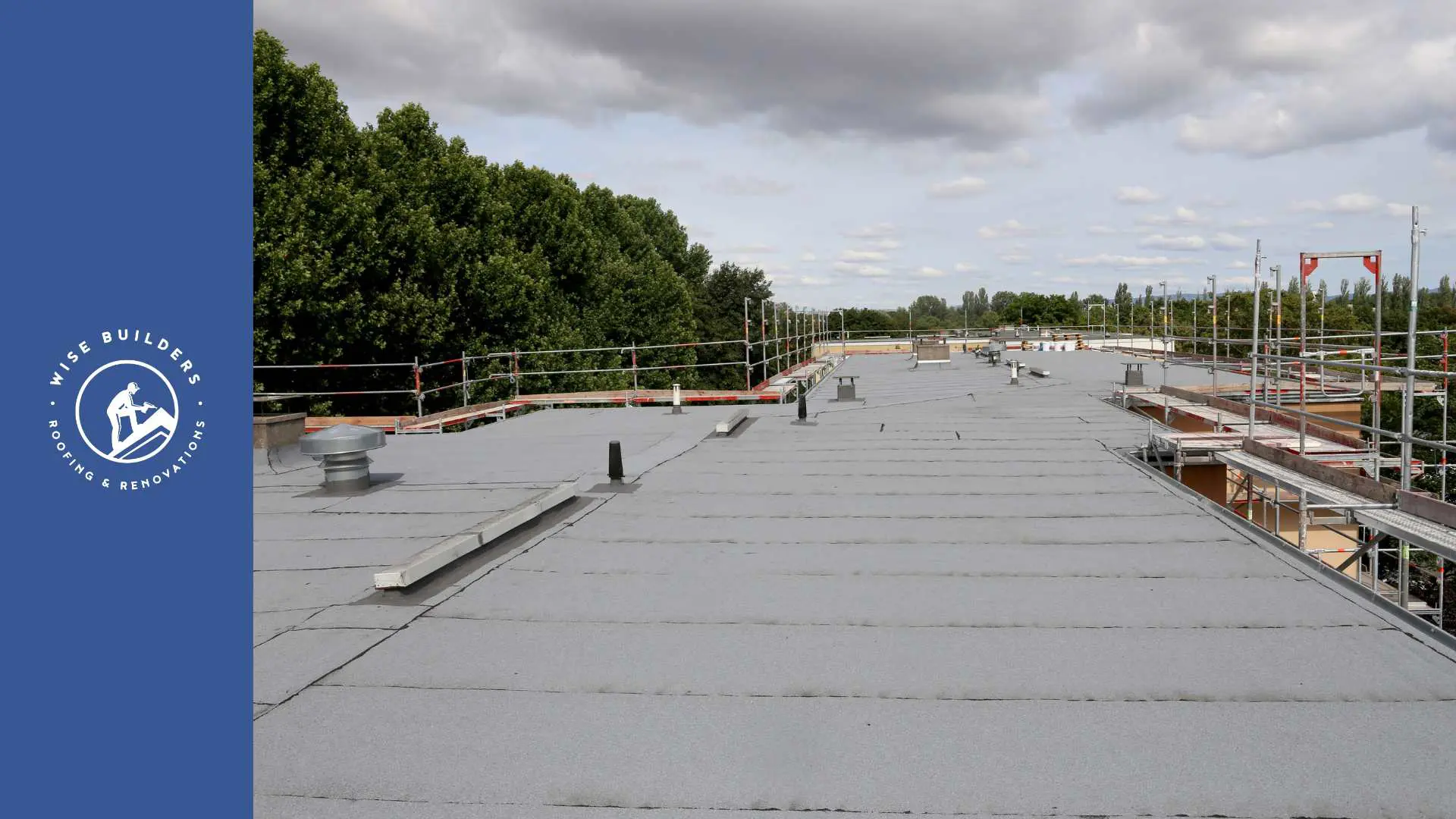
Key Highlights
- Clogged gutters can result in severe damage to your home, including foundation issues, basement flooding, and roof leaks.
- Common culprits behind clogged gutters are leaves, twigs, bird nests, pests, and deteriorating roofing materials.
- Regular gutter cleaning, ideally twice a year, is essential to prevent clogs.
- Gutter guards can be a worthwhile investment to minimize debris buildup and reduce the need for frequent cleaning.
- For persistent or severe gutter problems, seeking help from professional gutter cleaning services is highly recommended.
Introduction
Clogged gutters – a nuisance that can quickly escalate into a homeowner’s nightmare. While often overlooked, gutter cleaning plays a vital role in maintaining your home’s drainage system. Neglected gutters can lead to a cascade of problems, ranging from water damage and mold growth to foundation issues and costly repairs. This comprehensive guide will explore the common causes of clogged gutters, effective solutions, and essential tips for maintaining a free-flowing gutter system.
Understanding the Importance of Gutter Maintenance

Proper gutter maintenance is crucial for protecting your home from potential water damage. Gutters serve as a crucial component of your home’s drainage system, diverting rainwater away from the roof, foundation, and walls. When neglected, gutters accumulate debris, obstructing the flow of water and potentially causing a slew of costly problems.
The Role of Gutters in Home Protection
Rain gutters act as a frontline defense against water damage. Their primary function is to collect rainwater flowing down your roof and channel it safely away from your home’s foundation. This seemingly simple task plays a monumental role in safeguarding your property.
When functioning properly, rain gutters prevent water from pooling around your home’s foundation, which can lead to soil erosion, cracks, and even structural instability. Moreover, they protect your siding, windows, and doors from water damage, preventing rot, mold growth, and unsightly stains.
By ensuring the efficient flow of rainwater, properly maintained gutters preserve the integrity of your home’s structure, preventing costly repairs and maintaining a healthy living environment for you and your family.
Consequences of Neglecting Gutter Maintenance
Failing to prioritize regular gutter cleaning can result in a domino effect of problems for homeowners. One of the most common issues is water damage. When gutters are clogged, water overflows, seeping into your home’s foundation, walls, and even the basement.
This excess moisture creates a breeding ground for mold growth, posing health risks to your family and compromising your home’s structural integrity. Furthermore, clogged gutters can attract pests like mosquitoes, rodents, and termites, exacerbating the problem.
Ultimately, neglecting your gutters often translates to costly repairs, including foundation work, roof leaks, and mold remediation. Investing a little time and effort in regular gutter maintenance can help you avoid these headaches and save you significant expenses down the line.
Common Causes of Clogged Gutters

While leaves and pine needles steal the show as the most common culprits, other contenders include twigs, seed pods, shingle grit, bird nests, and even rodent infestations. Recognizing these common causes empowers homeowners to proactively protect their gutters and prevent potential damage to their homes.
Leaves and Tree Debris Accumulation
As seasons change, so does the landscape of our yards. Falling leaves, while aesthetically pleasing, are notorious for wreaking havoc on gutter systems. When left unaddressed, they accumulate, forming a dense mat that obstructs the flow of water, especially during heavy rain.
The weight of debris-laden water puts extra stress on gutters, potentially causing them to sag, pull away from the house, or even collapse. Additionally, the damp environment within clogged gutters becomes a breeding ground for mold and mildew, further exacerbating the problem.
To prevent leaf-related gutter clogs:
- Trim overhanging branches to minimize leaf accumulation.
- Consider installing gutter guards or screens to prevent debris from entering the gutters while allowing water to pass through.
Bird Nests and Rodent Infestations
While birds building nests in our gutters may seem harmless at first, these seemingly innocuous structures can contribute significantly to gutter clogs. Twigs, leaves, and other nesting materials used by birds create barriers that obstruct water flow, leading to backups and overflows.
Moreover, pests like rodents, attracted to the shelter and potential food sources provided by clogged gutters, can exacerbate the problem. These unwelcome guests bring along additional debris and droppings, further compounding the blockage and posing potential health risks.
Regular gutter cleaning and installing barriers to prevent nesting can help mitigate this issue, keeping your gutters free-flowing and pest-free.
Roofing Materials Shedding into Gutters
While often overlooked, the gradual deterioration of roofing materials can contribute significantly to clogged gutters. As roof shingles age, they shed granules, which can accumulate in your gutters over time, obstructing proper water flow.
This accumulation of shingle grit, combined with leaves and other debris, creates a thick sludge that hampers your gutter system’s ability to effectively channel rainwater. In severe cases, this can lead to backups, overflows, and ultimately, water damage to your home.
Regular roof inspections, prompt repairs, and routine gutter cleaning can help mitigate this issue by removing debris and ensuring the longevity of both your roof and gutter system.
Effective Solutions for Unclogging Gutters
Dealing with clogged gutters can be a tedious chore, but the good news is there are effective solutions to restore proper water flow and protect your home from potential damage. From simple DIY techniques to professional assistance, options abound for every homeowner and situation.
Ultimately, the best approach involves a combination of preventative measures and timely interventions to keep your gutters clean and functioning optimally, ensuring the longevity of your home’s drainage system.
Regular Cleaning and Maintenance Schedules
The best way to combat clogged gutters is through a proactive approach: regular cleaning and maintenance. Establishing a consistent schedule is key to preventing the buildup of debris and ensuring the optimal performance of your gutter system.
A good time to clean gutters is twice a year – once in the spring after leaves have fallen and once in the fall after the trees have shed their leaves. However, if you have a lot of trees around your house, more frequent cleaning may be necessary to stay ahead of potential blockages.
Remember, regular maintenance is not only about keeping your gutters clean, it is about protecting your home from costly water damage.
Installing Gutter Guards for Prevention
While regular cleaning is crucial, prevention is always better than cure when it comes to clogged gutters. Installing gutter guards offers a practical and effective way to minimize debris buildup and reduce the need for frequent cleaning.
Gutter guards act as a barrier, preventing leaves, twigs, and other debris from entering your gutters while allowing rainwater to flow freely. There is a variety of options available on the market, including mesh screens, foam inserts, and surface tension guards, each offering varying levels of protection and requiring different levels of maintenance.
By investing in gutter guards, you can significantly reduce the time and effort spent on cleaning while ensuring your gutters remain free-flowing, protecting your home from water damage.
Professional Inspection and Cleaning Services
For homeowners uncomfortable with heights or lacking the time for DIY gutter maintenance, professional inspection and cleaning services offer a convenient and reliable solution. These experts have the experience, equipment, and safety training to efficiently tackle any gutter-related issue.
A professional inspection can identify potential problems early on, such as leaks, improper slopes, or loose hangers, preventing costly damage down the line. Additionally, professional cleaning services can thoroughly remove even the most stubborn debris, ensuring your gutters are functioning optimally.
While hiring a professional comes with a cost, it offers peace of mind and can save you significant expenses in the long run by preventing major gutter-related issues.
DIY Gutter Cleaning Techniques
For those who prefer a hands-on approach, DIY gutter cleaning can be a rewarding and cost-effective way to maintain your home. It’s a task that, with the right tools and precautions, most homeowners can handle safely and efficiently.
Before you begin, gather the necessary equipment, including a sturdy ladder, gloves, safety glasses, a bucket, a garden hose, and a trowel or scoop for removing debris. Always prioritize safety by having a spotter when working at heights and wearing appropriate safety gear.
Tools and Equipment Needed
Embarking on a DIY gutter cleaning project requires having the right tools and equipment to ensure efficiency and safety. Thankfully, most of the items needed are common household tools, easily accessible at your local hardware store.
A sturdy ladder is essential for safely reaching and working on your gutters. Wear gloves to protect your hands from sharp debris and bacteria. Safety glasses shield your eyes from flying debris. Use a bucket to collect debris and prevent it from scattering. A garden hose with a spray nozzle helps flush out remaining dirt and leaves.
| Tool/Equipment | Purpose |
|---|---|
| Sturdy ladder | Safe access to gutters |
| Work gloves | Hand protection from debris and bacteria |
| Safety glasses | Eye protection from flying debris |
| Bucket | Collection of debris for easy disposal |
| Garden hose with spray nozzle | Flushing out remaining dirt and leaves |
| Trowel or scoop | Removing stubborn debris and clogs |
Depending on the severity of the clogs and the height of your gutters, you might consider additional attachments and accessories for your garden hose, such as a gutter cleaning wand or pressure washer, to make the task easier and more efficient.
Step-by-Step Guide to Safe and Efficient Cleaning
Ensuring safe cleaning practices while maintaining efficiency is crucial for a successful DIY gutter cleaning project. Following a step-by-step guide can streamline the process and minimize risks.
Start by setting up your ladder securely on level ground. Begin cleaning from the downspout, working your way up the gutter. Using gloved hands or a trowel, scoop out leaves, twigs, and other debris, disposing of it in your bucket.
Once the bulk of the debris is removed, use your garden hose to flush out remaining dirt and particles, ensuring water flows freely through the downspout. Finally, inspect your gutters for any signs of damage, leaks, or sagging, and address them promptly to prevent future issues.
When to Consider Gutter Replacement
While regular maintenance can significantly extend the lifespan of your gutters, there are instances when replacement becomes necessary. Recognizing the signs of aging and damage can help you make informed decisions about safeguarding your home.
If you notice persistent leaks, significant sagging, or cracks in your gutters despite regular repairs, it might be time for a replacement. Similarly, if your gutters show extensive rust or corrosion, compromising their structural integrity, considering an upgrade is wise.
Signs That Your Gutters Need Replacing
Neglecting the signs of aging gutters can lead to costly repairs and compromise your home’s protection against water damage. Recognizing when it’s time for a replacement is crucial for every homeowner.
One prominent sign is the presence of multiple leaks or cracks that persist despite repairs, indicating the gutter’s material is failing. Significant sagging or pulling away from the roofline suggests weakened hangers or excessive weight, jeopardizing proper water flow. If your gutters show extensive rust, corrosion, or peeling paint, even after repainting, it signifies material degradation, requiring a replacement.
Ignoring these signs can result in inefficient drainage, water damage to your home’s foundation, siding, and even basement. Addressing these issues promptly by investing in new gutters saves you from bigger headaches down the line.
Choosing the Right Material and Type for New Gutters
Selecting the best gutters for your home requires careful consideration of various factors, including material, type, and size, to ensure optimal performance and longevity.
Seamless gutters, known for their durability and leak resistance, are an excellent choice for many homeowners. They come in extended lengths, minimizing seams and potential weak points where leaks can occur. Choosing the right material depends on your budget and aesthetic preferences.
Aluminum is popular for its affordability, corrosion resistance, and variety of colors. Steel gutters offer superior strength but may rust over time. Copper, while more expensive, adds a touch of elegance and boasts exceptional durability. Additionally, considering the size of your home and the amount of rainfall in your area helps determine the appropriate gutter size for efficient water management.
Conclusion
Maintaining clean and unclogged gutters is crucial for the protection and longevity of your home. Regular maintenance, gutter guards, and professional inspections are effective solutions to prevent clogging issues. By understanding the common causes and implementing proactive measures, you can avoid costly repairs and potential damage to your property. Remember, a well-functioning gutter system is key to safeguarding your home from water-related issues. Stay proactive in gutter maintenance to preserve the integrity of your property.
At Wise Builders, We ensure our clients receive the best possible outcomes. Our commitment to quality workmanship and customer satisfaction is unwavering, making us the top choice for residential Roofing services in our community.







